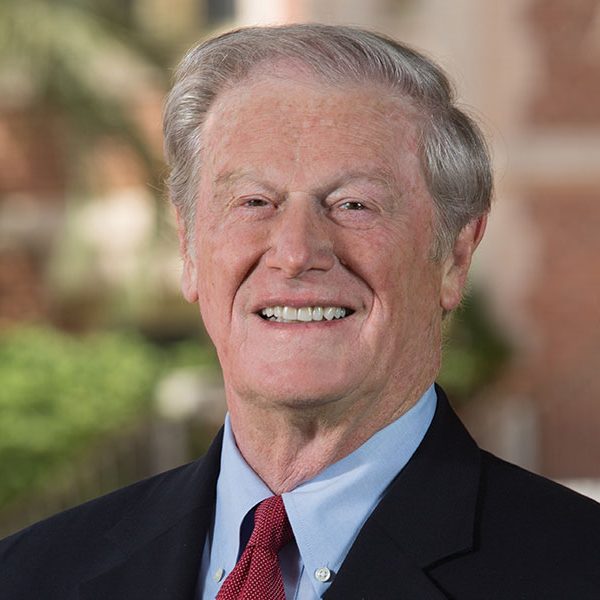
This opinion piece by FSU President John Thrasher was published Sunday, May 23, 2021, in the Tallahassee Democrat.
With perhaps the exception of the Florida Capitol, Doak Campbell Stadium is one of the best known landmarks in Tallahassee.
This awe-inspiring and immense brick structure currently seats nearly 80,000 fans, while the University Center that surrounds it is home to several academic departments including the FSU College of Motion Picture Arts, the FSU College of Communication and Information, and the Dedman College of Hospitality. It houses offices, classrooms, meeting space and the FSU Visitor Center.
Keeping this structure up to date, safe and inviting to visitors from around the world is vitally important for Florida State University and Tallahassee.
When it was built more than 70 years ago, Doak Campbell Stadium was derided by our rivals as an “erector set.” Over the years, investments by the Seminole Boosters and private donors, as well as the state and local government, have turned the stadium into one of the largest continuous brick structures in the United States.
This amazing facility – an incredible economic engine that brings $100 million to the local economy – simply would not exist without the continuous support of our local community.
But the truth is, many of the features of the original structure remain today, hidden from view by the amazing brickwork that surrounds it. That infrastructure is now badly in need of attention.
Because of the facility’s impact on the local economy, FSU has approached local government leaders about contributing to the renovations of this Tallahassee landmark.
Our request is for structural and safety enhancements only, including improvements to Doak’s foundation, electricity, lighting, drainage and concourses as well as upgraded railings and fixing protruding beams.
While most of the funding for improvements to Doak will come from non-local government sources, it is essential that we complete the new vision with help from Blueprint. This request is not about shifting dollars from another project. When more than 60% of Leon County voters approved Blueprint, a percentage of those funds were set aside for general economic development efforts, while other dollars were earmarked for specific capital projects. The money we are requesting comes only — and appropriately — from economic development funds.
Some people may be asking, “Why not a convention center?”
In a post-COVID world, the time is not right to expand in-person meeting space for conventions and large gatherings. In fact, moving ahead with this project may create an economic risk for our local community. When donor and tax dollars are on the line, we need to choose the wisest, most conservative course. To that end, we are requesting funding for an investment that has the highest degree of likelihood for giving our investors — in this case, taxpayers — the very best return on their dollars.
Therefore, we are asking for assistance with the badly needed renovations to Doak to ensure the structure is sound, safe, stable and will last for many years to come.
An investment in Doak Campbell Stadium — home to the Florida State Seminoles football team — is compelling.
Typically, an investor wants to get his or her money back in five years or less. In this case, there is $51 million in direct spending by visitors during a seven-game home football schedule and a total economic impact of $100 million. That means the $20 million of requested Blueprint economic development funding would result in a return on investment in less than a year.
Renovating Doak helps keep the FSU football program healthy by making sure its house is in top shape. And it helps keep the local economy healthy by investing dollars where they will have the most impact.




